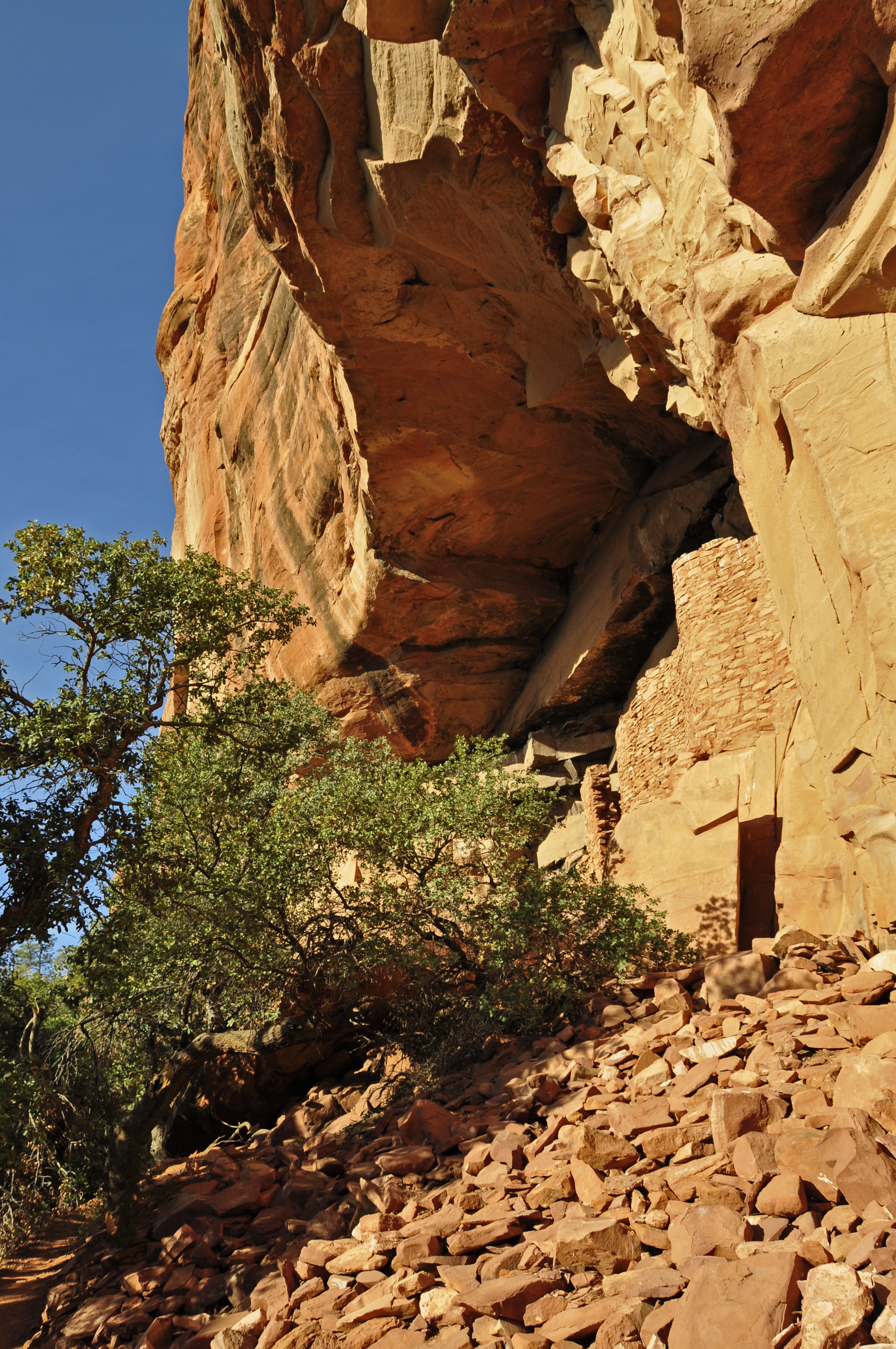Honanki on:
[Wikipedia]
[Google]
[Amazon]
 The Honanki Heritage Site is a
The Honanki Heritage Site is a
 ;Ancient peoples
The Honanki and Palatki
;Ancient peoples
The Honanki and Palatki
, handout by US Forest Service. This article incorporatesHonanki Heritage Site
at Verde Valley Archaeology Center
Honanki Heritage Site
at
Honanki Ruins photo gallery
by
Honanki Ruins
at Hike Arizona
photo gallery {{Protected Areas of Arizona Parks in Yavapai County, Arizona Archaeological sites in Arizona Petroglyphs in Arizona Ancient Puebloan archaeological sites in Arizona Buildings and structures in Yavapai County, Arizona 12th century in North America Native American history of Arizona Coconino National Forest Sinagua
 The Honanki Heritage Site is a
The Honanki Heritage Site is a cliff dwelling
In archaeology, cliff dwellings are dwellings formed by using niches or caves in high cliffs, and sometimes with excavation or additions in the way of masonry.
Two special types of cliff dwelling are distinguished by archaeologists: the cliff ...
and rock art site located in the Coconino National Forest
The Coconino National Forest is a 1.856-million acre (751,000 ha) United States National Forest located in northern Arizona in the vicinity of Flagstaff. Originally established in 1898 as the "San Francisco Mountains National Forest Reserve", th ...
, about west of Sedona, Arizona. The Sinagua
The Sinagua were a pre-Columbian culture that occupied a large area in central Arizona from the Little Colorado River, near Flagstaff, to the Verde River, near Sedona, including the Verde Valley, area around San Francisco Mountain, and signifi ...
people of the Ancestral Puebloans, and ancestors of the Hopi people
The Hopi are a Native American ethnic group who primarily live on the Hopi Reservation in northeastern Arizona, United States. As of the 2010 census, there are 19,338 Hopi in the country. The Hopi Tribe is a sovereign nation within the United ...
, lived here from about . The Palatki Heritage Site is nearby, also in the Coconino National Forest.
History
 ;Ancient peoples
The Honanki and Palatki
;Ancient peoples
The Honanki and Palatki archaeological site
An archaeological site is a place (or group of physical sites) in which evidence of past activity is preserved (either prehistoric or historic or contemporary), and which has been, or may be, investigated using the discipline of archaeology a ...
s were first studied by Jesse Walter Fewkes of the Smithsonian Institution. He conducted test excavations at both sites in 1895 and in 1911, during his study of Hopi migration traditions. Fewkes named the site "Honanki," which means "Bear House" in the Hopi language. Honanki was one of the largest prehistoric pueblos in the Verde Valley. This period in Southern Sinagua prehistory is called the "Honanki Phase." Many of the cliff dwellings in the area west of Sedona were occupied during the Honanki Phase. The Sinagua occupation of Honanki was probably between 1130 and 1280 CE, based on a tree-ring date of 1271 (from a wooden beam in the ruin) and other archaeological evidence.Palatki and Honanki Ruins, handout by US Forest Service. This article incorporates
public domain
The public domain (PD) consists of all the creative work to which no exclusive intellectual property rights apply. Those rights may have expired, been forfeited, expressly waived, or may be inapplicable. Because those rights have expired, ...
text from this and other US government
The federal government of the United States (U.S. federal government or U.S. government) is the national government of the United States, a federal republic located primarily in North America, composed of 50 states, a city within a feder ...
documents.
The rooms at the east end of Honanki were all destroyed in a large fire. Fire-marked stones were then reused to build new rooms. There were at least three phases of construction in the Honanki alcove.at Verde Valley Archaeology Center
Pictograph
A pictogram, also called a pictogramme, pictograph, or simply picto, and in computer usage an icon, is a graphic symbol that conveys its meaning through its pictorial resemblance to a physical object. Pictographs are often used in writing and g ...
s are a key feature of the site. Some of them were present before the caves were inhabited, dating to 2000 BCE. However, most of the pictographs are additions from the Sinagua peoples dating between 900 and 1300 CE.
;Historic peoples
Honanki was later inhabited by both Yavapai
The Yavapai are a Native American tribe in Arizona. Historically, the Yavapai – literally “people of the sun” (from ''Enyaava'' “sun” + ''Paay'' “people”) – were divided into four geographical bands who identified as separate, i ...
and Apache people
The Apache () are a group of culturally related Native American tribes in the Southwestern United States, which include the Chiricahua, Jicarilla, Lipan, Mescalero, Mimbreño, Ndendahe (Bedonkohe or Mogollon and Nednhi or Carrizaleño an ...
. Pictographs dating between 1400 and 1875 CE can be attributed to these two groups.
See also
* Palatki Heritage Site *Red Rock-Secret Mountain Wilderness
The Red Rock-Secret Mountain Wilderness is a 47,195-acre (19,099 ha) wilderness area located within the Coconino National Forest in the U.S. state of Arizona.
References
External links
Honanki Heritage Site
at
Coconino National Forest
The Coconino National Forest is a 1.856-million acre (751,000 ha) United States National Forest located in northern Arizona in the vicinity of Flagstaff. Originally established in 1898 as the "San Francisco Mountains National Forest Reserve", th ...
. Includes directions to the site.
Honanki Ruins photo gallery
by
Coconino National Forest
The Coconino National Forest is a 1.856-million acre (751,000 ha) United States National Forest located in northern Arizona in the vicinity of Flagstaff. Originally established in 1898 as the "San Francisco Mountains National Forest Reserve", th ...
Honanki Ruins
at Hike Arizona
photo gallery {{Protected Areas of Arizona Parks in Yavapai County, Arizona Archaeological sites in Arizona Petroglyphs in Arizona Ancient Puebloan archaeological sites in Arizona Buildings and structures in Yavapai County, Arizona 12th century in North America Native American history of Arizona Coconino National Forest Sinagua